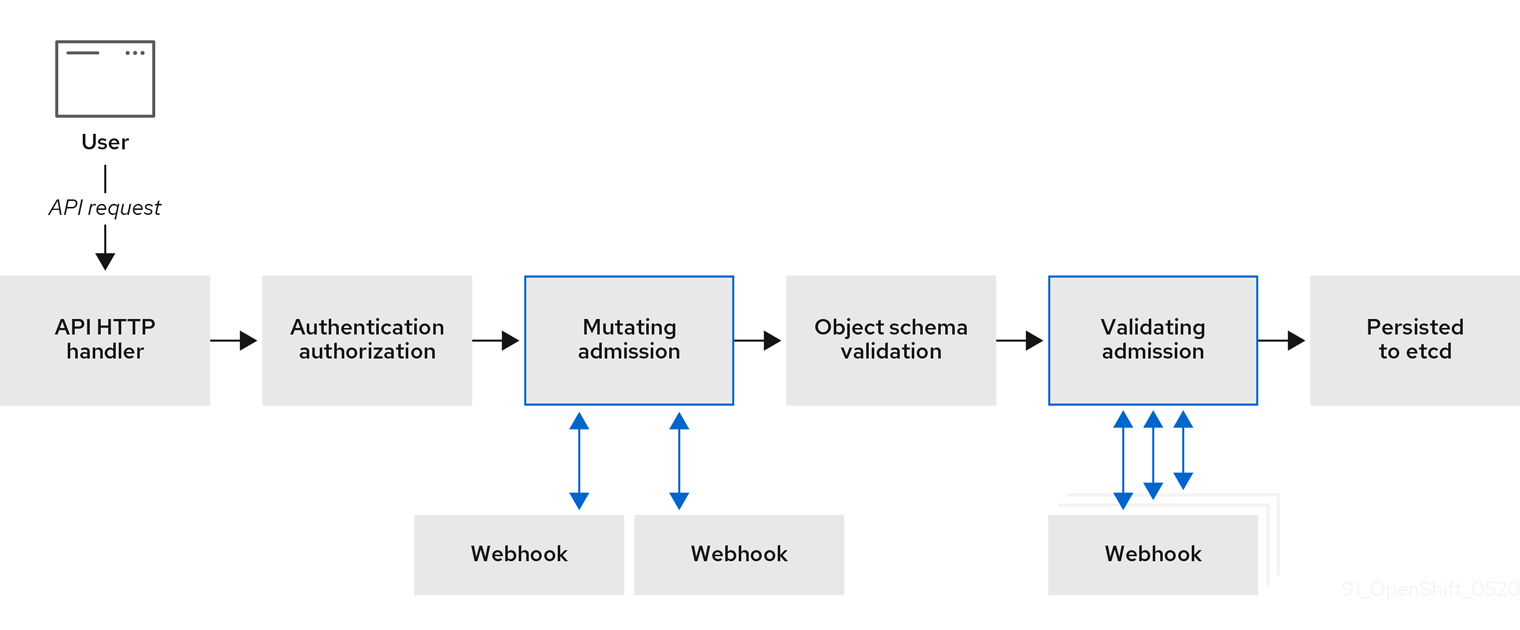8.3. Webhook admission plug-ins
In addition to OpenShift Container Platform default admission plug-ins, dynamic admission can be implemented through webhook admission plug-ins that call webhook servers, in order to extend the functionality of the admission chain. Webhook servers are called over HTTP at defined endpoints.
There are two types of webhook admission plug-ins in OpenShift Container Platform:
- During the admission process, the mutating admission plug-in can perform tasks, such as injecting affinity labels.
- At the end of the admission process, the validating admission plug-in can be used to make sure an object is configured properly, for example ensuring affinity labels are as expected. If the validation passes, OpenShift Container Platform schedules the object as configured.
When an API request comes in, mutating or validating admission plug-ins use the list of external webhooks in the configuration and call them in parallel:
- If all of the webhooks approve the request, the admission chain continues.
- If any of the webhooks deny the request, the admission request is denied and the reason for doing so is based on the first denial.
- If more than one webhook denies the admission request, only the first denial reason is returned to the user.
-
If an error is encountered when calling a webhook, the request is either denied or the webhook is ignored depending on the error policy set. If the error policy is set to
Ignore, the request is unconditionally accepted in the event of a failure. If the policy is set toFail, failed requests are denied. UsingIgnorecan result in unpredictable behavior for all clients.
Communication between the webhook admission plug-in and the webhook server must use TLS. Generate a CA certificate and use the certificate to sign the server certificate that is used by your webhook admission server. The PEM-encoded CA certificate is supplied to the webhook admission plug-in using a mechanism, such as service serving certificate secrets.
The following diagram illustrates the sequential admission chain process within which multiple webhook servers are called.
图 8.1. API admission chain with mutating and validating admission plug-ins

An example webhook admission plug-in use case is where all pods must have a common set of labels. In this example, the mutating admission plug-in can inject labels and the validating admission plug-in can check that labels are as expected. OpenShift Container Platform would subsequently schedule pods that include required labels and reject those that do not.
Some common webhook admission plug-in use cases include:
- Namespace reservation.
- Limiting custom network resources managed by the SR-IOV network device plug-in.
- Defining tolerations that enable taints to qualify which pods should be scheduled on a node.
- Pod priority class validation.